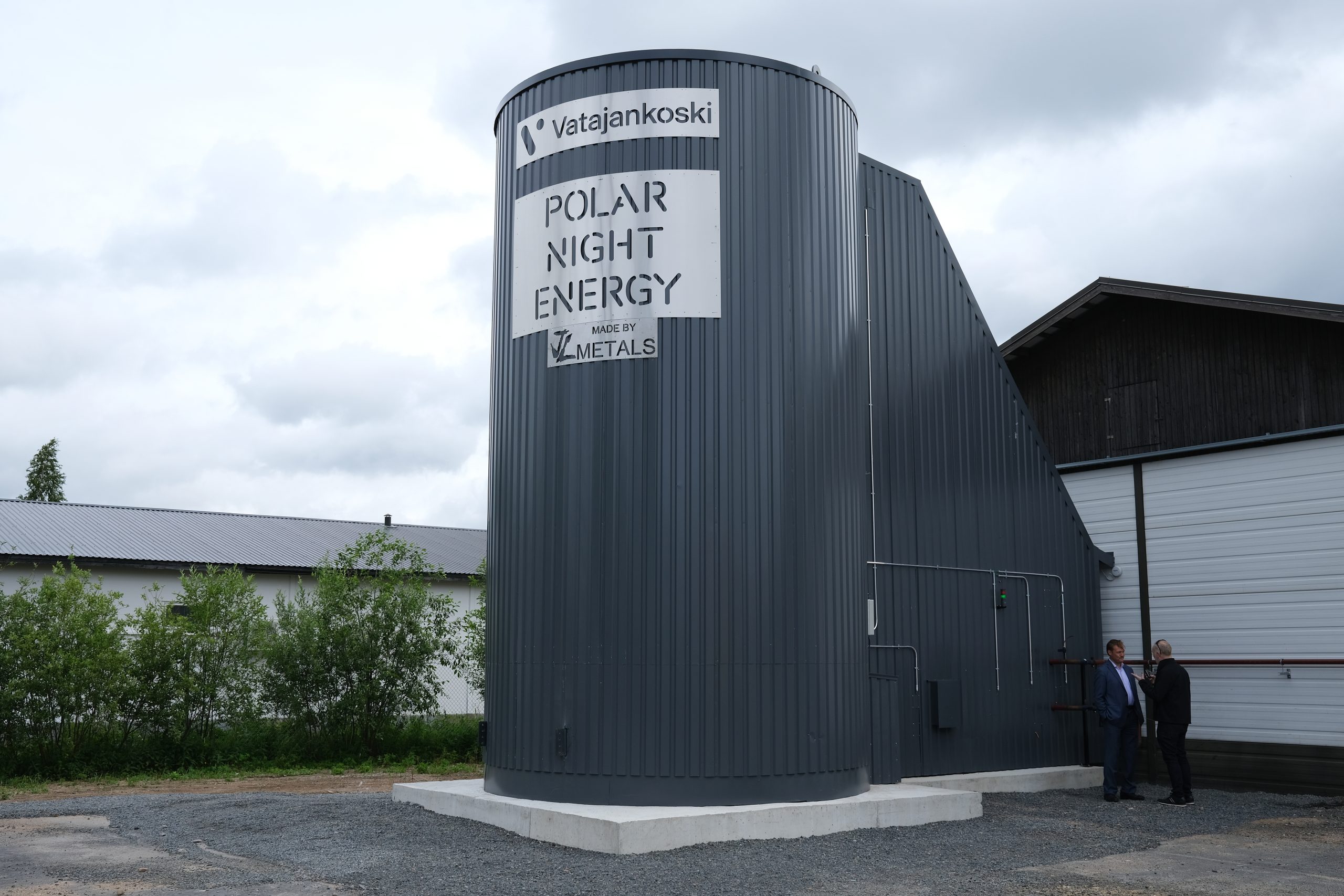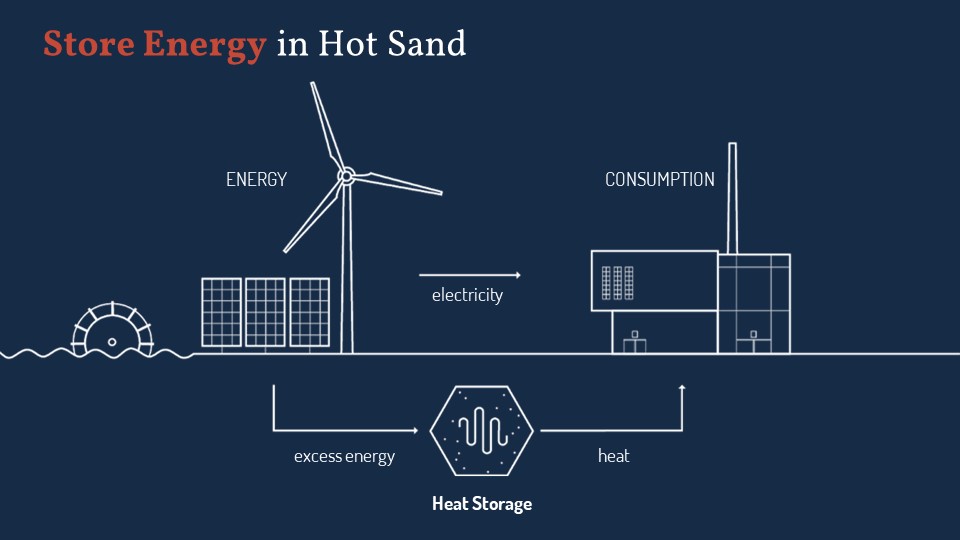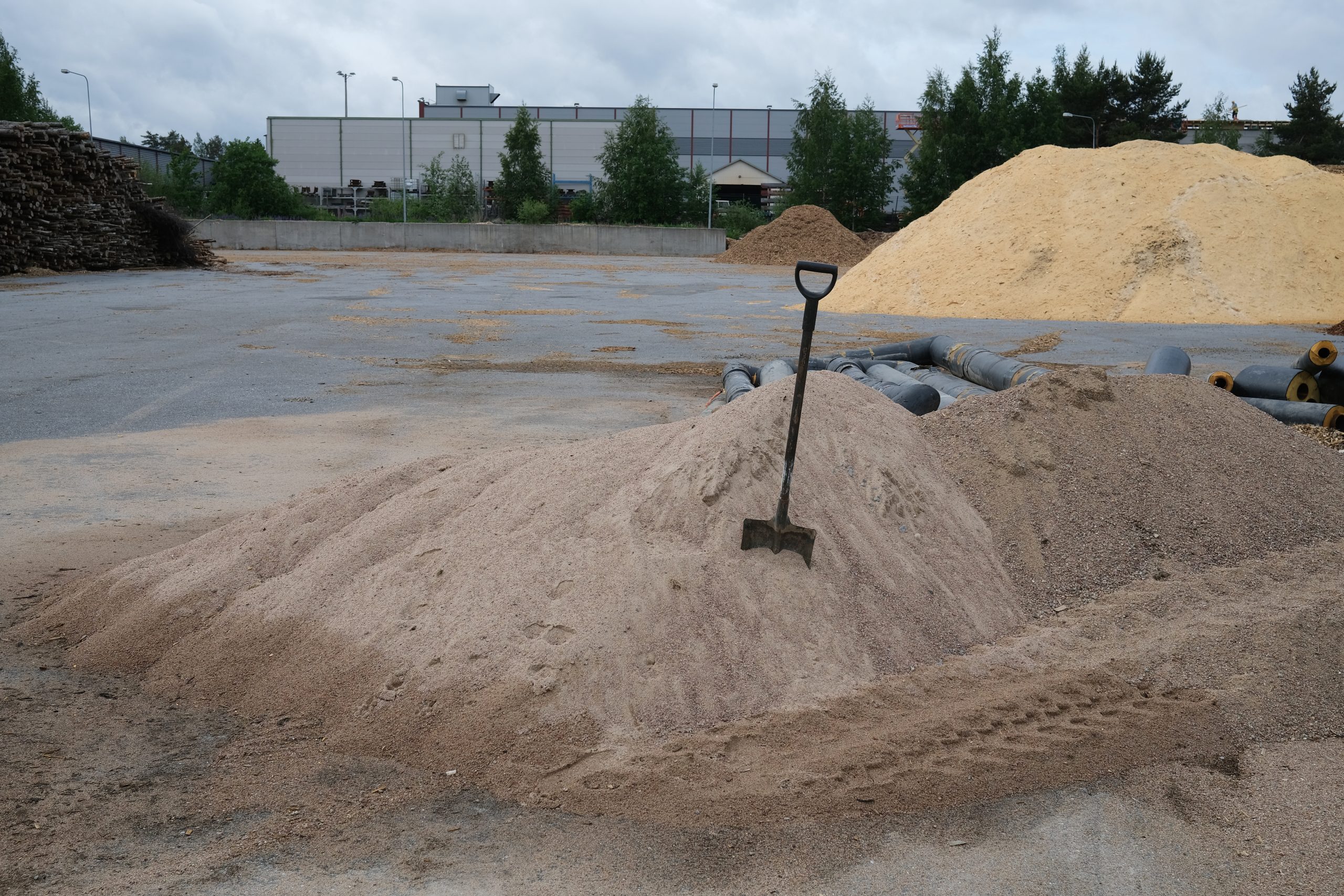
Two Finnish engineers have found a way to store energy from the wind and the sun in sand. They developed a sand battery that can dispense energy all year long by storing it in the form of heat. Read more about this technology here.
Billboard
Skyscrapper
Halfpage
The sand battery idea
According to Polar Night Energy, the Finnish company behind the idea, a sand battery is a “high temperature thermal energy storage”. It uses sand or sand-like materials as its storage medium to store energy as heat. The purpose of these batteries is to provide a high-power and high-capacity reservoir for excess wind and solar energy. By storing this excess energy as heat, it can be used to heat homes, to provide hot steam, and to power fossil-fuel dependent industries with high temperature process heat.
With this invention, the two founders Tommi Eronen and Markku Ylönen hope to support the shift towards renewable energy. Currently, the intermittent nature of energy sources is challenging for energy networks. Storage is expensive and imperfect. With the sand battery, renewables production can be upscaled, ensuring that there is always enough clean energy available.
The first commercial sand battery in the world is located in a Western Finnish town called Kankaanpää. It connects to the district heating networking and heats residential and commercial buildings as well as the municipal swimming pool. A BBC news story from July 2022 introduced the term “sand battery” to a large audience. So far, there are no sand batteries available for individual homes.
How the sand battery works
The heat storage of the sand battery consists of an insulated silo made of steel housing. Inside the silo there are sand and heat transfer pipes. Additional equipment outside the storage unit included automation components, valves, a fan, and a heat exchanger or steam generator. Electricity from the grid or from local production, coming from fluctuating sources like wind or solar, heats the sand. This charge happens whenever clean and cheap electricity is available. Then, the electrical energy gets to the heat storage via a closed loop air-pipe arrangement. Electrical resistance heating elements heat up the air that circulates in the heat transfer piping.
The sand reaches maximum temperatures of about 600 degrees Celsius in Kankaanpää. Depending on different needs, it is also possible to work with a higher temperature. In theory, the maximum temperature is not limited by the properties of the sand as a storage medium, but by the heat resistance of the materials used in construction and control.
To get the heat out of the heat storage, cool air is blown through the pipes. It heats up while passing through the storage. The resulting hot air serves to convert water into process steam or to heat district heating water in an air-to-water heat exchanger.

The benefits of sand
There are many solid materials that can hold temperatures well above the boiling point of water. Sand can store several times the amount of energy that a water tank of similar size could store thanks to its large temperature range. For this reason, sand plays a key role in this Finnish innovation. In addition, sand saves space and allows for a versatile use in industrial applications.
The grain size of the sand is not particularly important for the sand battery process because heat storage is not sensitive to the grain size. Therefore, Polar Night Energy prefers a high density and low-cost sand that does not come from scarce sources: “Someone else’s dirt could be our heat storage medium. We prefer to use materials that are not suitable for the construction industry.”
Another advantage of sand is that it can stay hot for months. In the heat storage in Kankaanpää, it is charged in 2-week cycles. According to the company, the heat storage has its best range when it is charged and discharged between 20 to 200 times per year.

An important step for renewables
While the idea of heating sand to store energy is not new, the model pioneered by Polar Night Energy allows for a large-scale application of heat storage. This makes the commercialisation of sand batteries possible. Clients include a range of different businesses and industries, such as energy utilities, residential and commercial building operators, food and beverage companies, chemistry and pharma, metal production, and other industries.
Even in the cold Finnish winter, the sand battery is working. This insulation surrounds the sand, keeping the temperature inside at 600 degrees Celsius. When full, the battery stores up to 8 MWh of thermal energy. Depending on demand, it can discharge about 200 kW of power through the heat-exchange pipes, which is enough to provide hot water and heating for about 100 homes and a swimming pool. In Kankaanpää, the sand battery supplements power from the grid. Battery charging happens overnight when the electricity prices are lower.
Sand batteries fill an important gap in renewable energy, where storage is still the key challenge. They provide a low-maintenance system and use lower-quality sand that has been rejected by builders to avoid contributing to the global shortage of higher quality river sand. The parts of the sand battery experience no wear and tear. The only moving part is the fan, which is easy to replace. On top of its efficiency, sand also has a very long lifetime: a sustainable storage for renewable energy.












